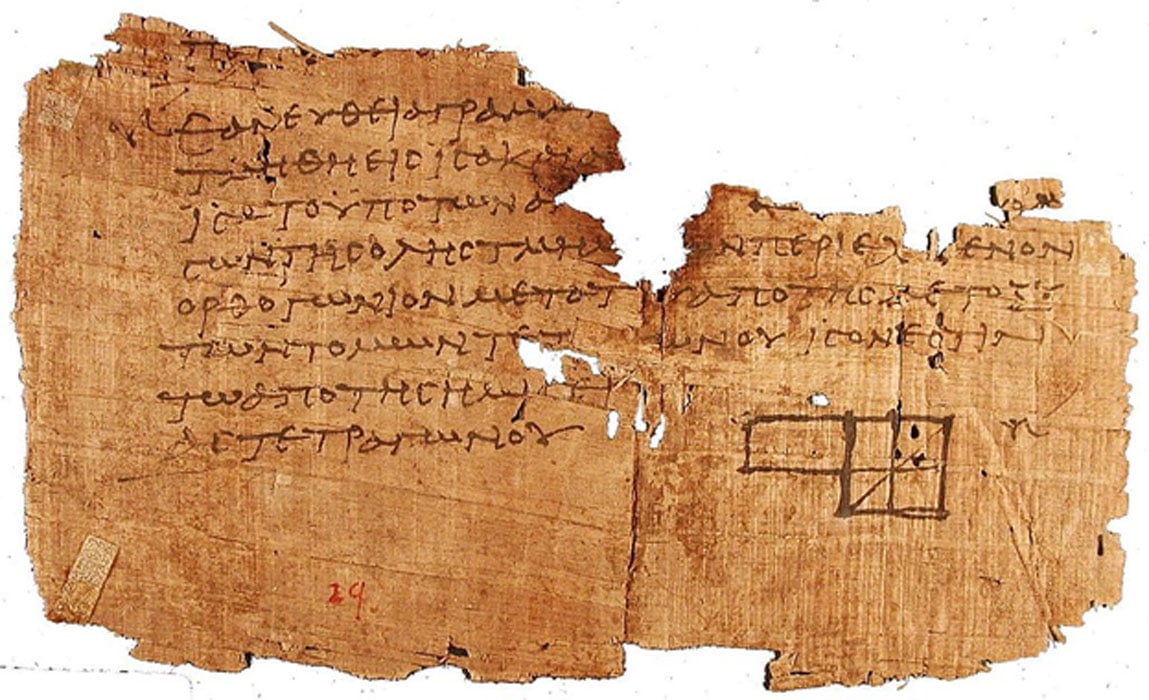Newly Translated Egyptian Papyrus Reveals Evil Spells of Coercion, Love Incantations and Healing Recipes
Some ancient Egyptian papyri have recently been translated and were found to be magic incantations intended to cast love spells, treat disease and force people to do the bidding of the person casting the spell.
All the person buying the spells had to do was fill in the name of the person targeted. For other spells, the person prepared a concoction of bird excrement. In others, demons and Gnostic gods were summoned.
Scholars from several institutions worked to translate the spells, which were in ancient Greek.
The spells, which date to about the 3 rd century AD, are in the Oxyrhynchus Papyri Collection of the Egypt Exploration Society at Oxford University in England. The papyri were written in many ancient languages, including Greek and Egyptian scripts. They were discovered in the city of Oxyrhynchus on the Nile River in the late 19 th and early 20 th centuries.
Images of the spells and their translations will be published soon in the society’s journal Graeco-Roman Memoirs. It is the largest collection of ancient spells to be published in 25 years, says a press release from the society.

The recently translated papyrus containing magic spells. Credit: © the Imaging Papyri Project, University of Oxford & Egypt Exploration Society.
The papyri provide insight into medical treatments, both averting and treating disease, and attracting a lover.
For one spell, the caster would engrave the target’s name on a small copper plate with some magic words and sew it onto an article of the victims’ attire, says Live Science. The victim was supposed to do whatever the spellcaster directed him to do.
One of the medical documents is a collection of recipes with ingredients that include excrement of winged creatures. Such recipes are called stercoraceous. Researchers think the sheet may be a section of a larger pharmocopoeia.
“We may not be in too much of a hurry to try ‘Eagle droppings crushed with wine and drunk’ which are prescribed to stop sufferers of quinsy (a rare and potentially serious complication of tonsillitis),” the society’s press release says. “Other recipes were perhaps ointments – often for skin conditions including boils, leprosy, polyps and shingles – or burnt as fumigants to have the desired effect.”

This papyrus holds a spell that aims to force a man to do whatever the person who cast the spell wants. Credit: © the Imaging Papyri Project, University of Oxford & Egypt Exploration Society
The ancient authors borrowed from Greek medical knowledge in the Hellenistic town of Oxyrhynchus. Greek culture spread across Egypt and the Middle East following Alexander of Macedons’s conquests.
Love or attraction spells in the recently deciphered texts state:
“Take a pigeon’s egg and write down on it the following magical signs … let her love me for the entire time.” (The society says pigeon eggs were considered aphrodisiacal.)
“Burnt offering in the bathhouse. … and write with the blood of Typhon and glue it to the dry vaulted vapour room of the bath: ‘I adjure you, earth and waters, by the demon who dwells on you and the fortune of this bath so that, as you blaze and burn and flame, so blaze her until she comes to me.’” (Typhon was a monster with 100 heads who breathed flames. He was of a type of demon known all over the ancient world. In Greece, Zeus was said to have thrown him into Tartarus.)

Combat between Zeus and Typhon (public domain)
The press release says the following charm was meant to restrain the anger of opponents or quell the eloquence of lawyers:
“Take a chameleon alive and hang it, … smoke a root of the plant chameleon … Push through its mouth a stone … gold-coloured, very bright. And after consecrating it with the consecration that works for everything, you will have an unsurpassable wrath restrainer charm, for, worn around the body, it is adapted for all things; but if someone or the opponents in a lawsuit speak … press the stone and they will certainly not speak”.
Ancient Origins has reported in the past on translations of Oxyrhynchus papyri. In April 2015 we wrote about radical surgery and medicaments with ingredients now known to be toxic among eye-disease treatments in 1,900-year-old medical papers.
One of the eye treatments in an ancient Egyptian text was a concoction called collyrium, which was meant to cure mucosal discharges from the eye. It had in it copper flakes, white lead, washed lead dross that is produced in smelting, antimony oxide, poppy juice, starch, gum Arabic, the plant Celtic spikenard, dried roses and rainwater.
Toxic as that is, it wouldn’t hurt as much a recommended eye surgery for an everted eyelid. A fragment of that treatment that survives, translated by Marguerite Hirt of Cambridge University, reads in part: "… the eye … I began … by the temple … the other from the temple … to remove with a small round-bladed knife … the edge of the eyelid from outside … from within until I scooped out …"
Also in the medical texts is a treatment for headaches from hangovers: String a garland of leaves of the shrub chamaedaphne around the neck. People of that time used the leaves of Alexandrian chamaedaphne for general headache treatments, but whether it worked is open to question.
Top image: A papyrus from the Oxyrhynchus Papyri Collection (not the exact papyrus referred to in the news report). (public domain)
By Mark Miller



















